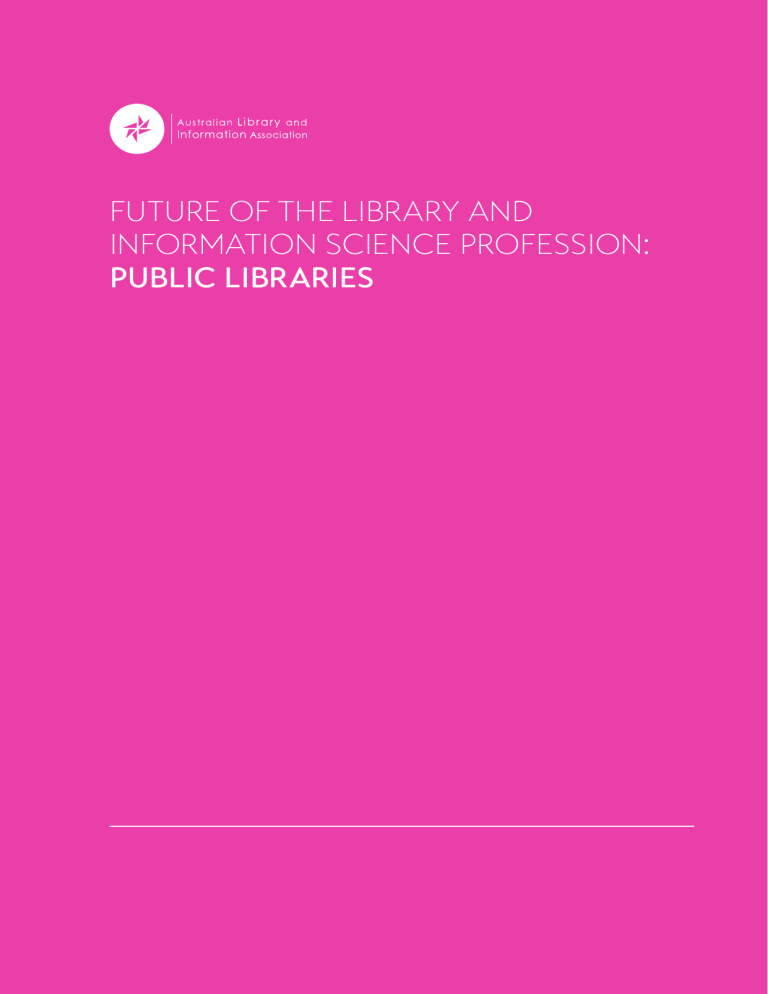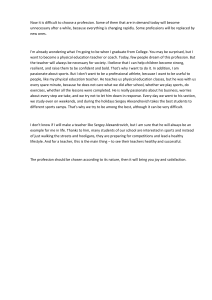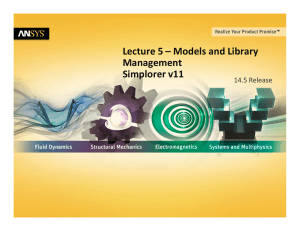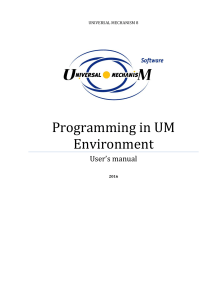
FUTURE OF THE LIBRARY AND INFORMATION SCIENCE PROFESSION: PUBLIC LIBRARIES © 2014 Australian Library and Information Association Future of the Library and Information Science Profession: Public Libraries Canberra ACT, Australian Library and Information Association, April 2014 www.alia.org.au/futureoftheprofession CONTENTS About public libraries 02 Themes07 50:50 by 2020 07 Reading — a national pastime 08 New media 08 Support for the creative economy 10 Community created content 10 It’s not all about the book 13 Maker spaces 13 Enterprise hubs 14 Online learning 14 Everyone a member 17 Local services through a national network 17 The meaning of free 18 Actions arising 20 01 FUTURE OF THE LIS PROFESSION: PUBLIC LIBRARIES ABOUT PUBLIC LIBRARIES There are some 1,505 public library service points across Australia, including 1,429 fixed point and 76 mobile libraries. These services are funded by local and state or territory government in New South Wales, the Northern Territory, Queensland, South Australia, Victoria and Western Australia, and by the State Government in Tasmania and the ACT Government in Canberra. Public libraries enable good citizenship. They provide the resources and support for self-education, literacy and lifelong learning in communities. The ALIA Australian Public Library Alliance is made up of representatives from every state and territory (there are public library associations in each state) and Public Libraries Australia. Current services for users include: yy Resources, ie books, ebooks, newspapers, magazines, films, music and other materials in print and digital forms, for leisure and study. yy Access to content, including support for book groups, and home library services for people who can’t travel to their local library. yy Learning opportunities through events and activities, including storytime for families with young children, classes and learning opportunities for all ages. yy Local history collections. yy Fast internet access on library computers, and, increasingly, free wi-fi for people’s own devices. yy News and information about local issues. 02 FUTURE OF THE LIS PROFESSION: PUBLIC LIBRARIES The role of library and information professionals: yy Shape the library service to meet the needs of the local community. yy Celebrate reading, literacy and lifelong learning. yy Manage the print and online collections. yy Network with partners to connect with local issues, needs, people. yy Arrange interlibrary loans. yy Deliver programs and activities. yy Provide information and answer enquiries. yy Ensure all materials and the ways they are used are copyright compliant. These are just some of the specialist skills library and information professionals bring to their roles: yy Literacy and learning support. yy Collection development, management and acquisition. yy Advice for readers — understanding reading levels and interests and matching people with their perfect book. yy Delivering programs for children and young people, which help with language and literacy development. yy Community support — developing policy, programs, collections and networks to address the issues that are holding a community, group or individual back from achieving their full potential. 03 FUTURE OF THE LIS PROFESSION: PUBLIC LIBRARIES Return on investment In March 2103, ALIA published a report by independent consultants SGS Economics and Planning, which showed that Australian public libraries provide a net annual benefit of some $1.97 billion1. ‘This is reflected in a benefit cost ratio of 2.9, meaning that the annual benefits generated outweigh the annual costs by a factor of 2.9. This is considered to be a sound return on investment. Importantly, the level of investment in public library services does not display a pattern of diminishing returns. Estimates of per capita costs and benefits, using the research carried out in Victoria and Queensland in 14 case study communities, highlight that the larger the investment made into public libraries, the larger the benefits derived by the respective communities.’ 1 www.alia.org.au/sites/default/files/documents/advocacy/Contribution%20of%20Australian%20Public%20 Libraries%20Report.pdf 04 FUTURE OF THE LIS PROFESSION: PUBLIC LIBRARIES Statistics The latest available figures2 show that during the 2011–2012 financial year: yy There was one public library service point for every 15,000 people. yy More than one third of all public libraries were open more than 45 hours per week. yy More than seven out of ten public libraries were open for more than 30 hours each week. yy Almost 181 million items were lent to 10 million members of Australia’s public libraries. yy There were over 110 million customer visits annually, or more than nine million per month. yy More than 40 million items (1.8 items per person) were made available for the use of the community and over $123 million was spent on ensuring that these collections remain up to date and relevant (more than half the collections are less than five years old). yy Total expenditure on public libraries increased from $815 million in 2007–2008 to over $1.01 billion in 2011–2012, representing a 24% increase. Expressed on a per capita basis, funding for public libraries has increased by 17% over the same period to $44.55. 2 www.nsla.org.au/sites/www.nsla.org.au/files/publications/NSLA.public_library_stats_2011-12_0.pdf 05 FUTURE OF THE LIS PROFESSION: PUBLIC LIBRARIES THEMES THEME 01 50:50 BY 2020 The big excitement in book borrowing over the last three years has been around ebooks. Yet despite growing demand from borrowers, ebooks currently represent fewer than 5% of loans across the public library network. This is partly a result of ebooks not being available through all libraries, partly because of issues around availability of popular titles, but there is also strong evidence that people who use ereaders continue to read physical books. Very few have moved exclusively to digital content. ALIA produced a discussion paper in 2013 entitled 50:50 by 20203, putting forward the premise that public library collections will not have gone beyond the point of 50% print, 50% digital by this date — and in some regional library services, ebooks will still be in the minority. The topic is open for debate. Whatever the actual percentages, the challenge for public libraries and their funders will be to maintain collections of the same titles in multiple formats. This will require discussions at a national and international level with publishers, firstly to achieve an economic model that works for all parties, and secondly to work through the technical issues of lending ebooks to users whose devices operate on different platforms. 3 www.alia.org.au/sites/default/files/documents/about/ALIA-5050-by-2020_2.pdf Funding is the biggest issue. Publishers’ pricing goes up 7–10% per year. My budget goes up 3%. — ALIA FUTURE OF THE LIS PROFESSION REGIONAL TELECONFERENCE NOTES 07 FUTURE OF THE LIS PROFESSION: PUBLIC LIBRARIES THEME 02 READING — A NATIONAL PASTIME Australian Bureau of Statistics data tells us that 44% of Australians have literacy difficulties4, yet figures published by the Australia Council for the Arts show that those of us who have the skills are reading just as much as we ever did5, and people with portable reading devices spend more time reading than others. With an ageing population — ie a generation with more time on their hands — we can reasonably expect this demand to grow. Any thought of public library book borrowing being redundant in the digital age has no basis in reality. THEME 03 NEW MEDIA In the digital environment, the boundaries between ebooks, films, video games and animations are blurring. Book apps for children, for example, provide exciting new opportunities to explore interactive text, pictures and sound. Dreamworks and Pixar are moving into interactive storybooks, and we will see an explosion of activity in this area over the next few years. Libraries will be an important route to readers, but this will require the development of new delivery methods beyond the current ebook platforms. 4 www.abs.gov.au/ausstats/abs@.nsf/Lookup/4228.0Main+Features202011-12 5 www.australiacouncil.gov.au/resources/reports_and_publications/artforms/literature/fact-sheet-trends-in-readingamong-australians 08 FUTURE OF THE LIS PROFESSION: PUBLIC LIBRARIES THEME 04 SUPPORT FOR THE CREATIVE ECONOMY Australian authors, publishers and booksellers are under growing pressure from global internet retailers. By contrast, libraries provide a valuable local route to market. Readers have always borrowed and bought books; in the absence of a local bookshop, they are now using libraries to browse for new authors and new titles, which they either borrow or then buy online. In the future, through initiatives such as the ‘buy it now’ button on library management systems, and the promotion of local work, Australian libraries will provide greater support for the wider book industry, including Australian authors, publishers and booksellers6. THEME 05 COMMUNITY CREATED CONTENT Digital publishing and print-on-demand bring content creation within the reach of individuals and communities. Local history groups, genealogy researchers, clubs — there is enormous potential for people to produce works that others will want to see and use, and what better way to gain access than through the library? 6 www.alia.org.au/sites/default/files/documents/Discussion%20paper%20-%20The%20business%20case%20for%20 ebooks%20and%20elending.ADVOC_.20130702.BC_.pdf 10 FUTURE OF THE LIS PROFESSION: PUBLIC LIBRARIES Who is collecting local history, the records of the tennis club, the story of the town? Public libraries can position themselves as publishers of local digital content, making publications available through their ebook platform. And it doesn’t have to be books — content about the town, that tree, that street, that statue through your mobile device. Using GPS technology we can make the visitor experience so much richer, courtesy of the library. — ALIA FUTURE OF THE LIS PROFESSION SUMMIT WORKSHOP NOTES 11 FUTURE OF THE LIS PROFESSION: PUBLIC LIBRARIES The library itself has been transformed from a storehouse of the collection and quiet individual study into a true community meeting place. It is now made up of a diverse interlocking series of spaces for study, casual reading, interaction, collaboration, children’s spaces, community spaces, language and IT support spaces, café environments, lounges and outdoor terraces and gardens. It is a place where guidance and assistance is offered without obligation, where we can meet by arrangement or informally bump into our neighbours or visitors from out of town. It is place where we can just be without having to buy. It is paradoxically the most grounded and localised community environment that at the same time facilitates and supports global interconnection. — PUBLIC PLACE, TECHNOLOGY AND THE CONTEMPORARY LIBRARY, RICHARD FRANCIS-JONES, FRANCIS-JONES MOREHEN THORP Chris Anderson in his book Makers: the new industrial revolution (2012) discusses the revolutionary possibilities of 3D printing, do-it-yourself biotechnology and more adaptable small-scale robotics. Economies of scale are only effective in some situations and Anderson argues that the internet supports global online communities with new opportunities to connect to specialised expertise and niche services. Creating and ‘making’ in many forms may be increasingly dispersed and if so, this will impact on the use of libraries. — NSLA SUBMISSION TO THE ALIA FUTURE OF THE LIS PROFESSION CONSULTATION 12 FUTURE OF THE LIS PROFESSION: PUBLIC LIBRARIES THEME 06 IT’S NOT ALL ABOUT THE BOOK Book borrowing will remain the core public library service, but public libraries of the future will have many other roles — and we are already seeing these take shape. The library as a community space will become even more important; technology will continue to feature, providing people access to devices and software that would otherwise be unaffordable; library staff will not be behind a desk, they will be engaging with users face-to-face and online, and they will be delivering programs and activities, both direct and through partnerships, tailored to suit the local community. Public libraries will continue to connect users to information and ideas, but they will play an even greater role in bringing people together. THEME 07 MAKER SPACES Libraries have always been places for exploration and discovery through the use of shared resources. Now, as well as books, we have new materials and devices. Public libraries are already experimenting with maker spaces, including 3D printers and other gadgets that would be beyond the reach of most individuals. We can expect more of this in the future, encouraging learning through play. 13 FUTURE OF THE LIS PROFESSION: PUBLIC LIBRARIES THEME 08 ENTERPRISE HUBS In the wake of the Global Financial Crisis, libraries attracted job seekers — drawn by free newspapers and internet access — and people interested in starting up their own businesses. From here, the notion of public libraries as enterprise hubs has further developed. In future, we can expect teleworkers looking for space outside the home; small businesses seeking affordable web conferencing facilities and meeting rooms; independent consultants conducting research for clients through library databases — public libraries will be an integral part of councils’ support for the local economy. THEME 09 ONLINE LEARNING For many years, public libraries have offered informal pathways into formal learning, but with the growth in online education, their role has the potential to expand even further. Partnerships with higher education institutions offering courses remotely will see more students using public libraries as local meeting and study spaces. This will require new resources, but has the potential to make a significant contribution to councils’ commitment to developing a skilled local workforce. 14 FUTURE OF THE LIS PROFESSION: PUBLIC LIBRARIES Potential developments include digital technology labs to provide opportunities for entrepreneurs and innovators to develop new ideas and services. — PUBLIC LIBRARIES OF NEW ZEALAND STRATEGIC FRAMEWORK 2012–2017 Learners will want to get away from hyper-connected spaces so they can focus on study. That’s where the library will come in. — ALIA FUTURE OF THE LIS PROFESSION SUMMIT WORKSHOP NOTES 15 FUTURE OF THE LIS PROFESSION: PUBLIC LIBRARIES Grey nomads will increase and they want one library card. Regional libraries have wi-fi to attract and encourage them to stay and spend money. Smart drivers’ licences enabled as library cards were ruled out, but what a great idea. — QUEENSLAND ALIA FUTURE OF THE LIS PROFESSION WORKSHOP NOTES Collaboration is a keyword in the language of politics, and collaboration is something we do well. — MOUNT DRUITT TAFE ALIA FUTURE OF THE LIS PROFESSION WORKSHOP NOTES 16 FUTURE OF THE LIS PROFESSION: PUBLIC LIBRARIES THEME 10 EVERYONE A MEMBER With 44% of the population already registered library members, there was a strong feeling throughout our consultation that library membership should be a gift to every child at birth. There was also discussion about creating a council smartcard that could be enabled for library membership, discount travel, medical and other uses that currently require residents to carry multiple cards. THEME 11 LOCAL SERVICES THROUGH A NATIONAL NETWORK Especially with an ageing population to take care of, the pressure on local and state/territory government funding is unlikely to lift. This makes it even more important for libraries to operate as efficiently as possible. The local funding model does not encourage collaboration, but public libraries themselves have taken the initiative to work as an informal national network, seeking out economies of scale and benefiting from collaborative projects such as the National Year of Reading in 2012 and eSmart Libraries (in partnership with the Alannah and Madeline Foundation and the Telstra Foundation). South Australia has introduced one library card for all the state’s library users, based on a shared library management system, and other states are set to follow. In future, we will see further collaboration and consortia arrangements put in place to support local delivery of services. 17 FUTURE OF THE LIS PROFESSION: PUBLIC LIBRARIES THEME 12 THE MEANING OF FREE Equality of opportunity is one of the foundations of the public library service, and we will defend free book loans with our last breath — but as public library services expand, there will be increasing pressure to introduce charges for additional services, such as use of equipment, participation in training courses, interlibrary loans, meeting room hire, and so on. Many libraries already charge users for these ancillary activities and library and information professionals will need to have a clear view of what is a core activity (free of charge), and what is an add-on, which users might need to pay for. 18 FUTURE OF THE LIS PROFESSION: PUBLIC LIBRARIES There was talk about freedom hackers and wikileaks; the library as the third place and as the free space — free in terms of cash; free in terms of thought. Participants were concerned at the thought of either free element being challenged. — ADELAIDE NATIONAL ADVISORY CONGRESS WORKSHOP NOTES 19 FUTURE OF THE LIS PROFESSION: PUBLIC LIBRARIES ACTIONS ARISING New media and technologies provide exciting opportunities for public libraries to expand their services to meet community needs in innovative ways, but they also introduce major challenges around funding. ALIA • We will continue to hold discussions with other book industry stakeholders to find mutually beneficial ways of working in the ebook environment. • We will help identify advantageous ways for public libraries to collaborate. • We will help inform public library members about innovation in the sector nationally and internationally. • We will deliver PD and training opportunities to support library and information professionals and library staff who come from other disciplines. • We will help connect public libraries with higher education and other libraries. Advocacy • We will advocate as needed for core library services to remain free at the point of use (library services are paid for through taxes). 20 FUTURE OF THE LIS PROFESSION: PUBLIC LIBRARIES Professionals and their organisations • Library services will need to further develop their ebook holdings and create collection management strategies that factor in multiple formats. • Libraries within specific jurisdictions will need to work closely together to achieve operating efficiencies, for example providing users across municipal boundaries with one library card. • Library managers will need to stay on top of innovation in the sector, identifying ways to maximise community engagement and make the library experience even more interactive. • Enterprise support will enjoy a stronger focus and libraries will need to develop their services for entrepreneurs and small businesses. • Stronger partnerships between public libraries and education libraries will also be beneficial. 21 FUTURE OF THE LIS PROFESSION: PUBLIC LIBRARIES









